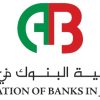
Amman – Al Rai Newspaper
Maher Al-Mahrouq, ABJ Director, confirmed that the banks financial strength indicators confirm soundness of the banking sector and its ability to deal with the pandemic repercussions.
He pointed out that capital adequacy ratio reached 17.93% in the first half of 2020 while liquidity ratio reached 129%, and the non-performing debt ratio reached 5.4%.
Al-Mahrouq said in a statement to Al-Rai that the coverage ratio is high, and provisions cover 68% of the non-performing debts pointing out to the uncovered part which constitutes only 7.3% of the bank shareholders’ equity.
He said that the decline in banks’ profitability indicators is due to the pandemic impact on the economy noting that the net tax profit in the first half of last year amounted to 165.4 million Dinars.
He pointed out to the expectations of high default rates and the corresponding increase in provisions by banks to meet any potential default from additional provisions noting that this more supports banks to absorb any increase in non-performing debts which enhances confidence in the Jordanian banking sector.
Al-Mahrouq said that credit facilities granted to the resident and non-resident private sector constituted 91.2% of the total credit facilities.
Al-Mahrouq stressed the role of the Jordanian banking sector during the pandemic through measures that included pumping additional financing into the economy, postponing individual loan installments and implementing programs and directions of the Central Bank to extend the grace period and reduce interest rates on loans. These measures included structuring and scheduling loans for the affected sectors.
He said that banks’ strength is in favor of the economy contributes to maintaining continuity of economic activity in addition to supporting banks’ social responsibility. He stressed the contribution of the banking sector to financial and monetary stability pointing out that banks have a sophisticated and safe technological structure.
Al-Mahrouq stated that indicators of the financial depth of the banking sector show the relatively large size of the sector compared to the Jordanian economy adding that this reflects the depth and importance of the banking sector.
He said that these indicators appear according to the total assets of banks to the GDP, the total deposits with banks in relation to the GDP, and the total credit facilities granted by banks to the GDP indicator.
With regard to the distribution of deposits by currency type, he said that indicators show a clear stability in the percentage of deposits in foreign currencies during January of 2021 compared to the end of 2020, which means that no significant dollarization operations occurred.




